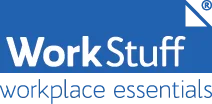
In office management, procurement decisions play a crucial role in optimizing operational efficiency and controlling costs. Among the key considerations is the method of purchasing supplies: bulk buying and on-demand ordering are two prominent strategies. Both have their advantages and drawbacks and determining which approach suits your office best requires careful evaluation. Let’s delve into the comparison of bulk buying and on-demand ordering to help you make an informed decision.
Bulk Buying:
Bulk buying involves purchasing goods in large quantities, typically at discounted rates. This approach is favored by many businesses for its potential cost savings and convenience. Here are some of the benefits of bulk buying:
- Cost Savings: Buying in bulk often allows businesses to secure lower unit prices. Suppliers frequently offer discounts or bulk pricing for larger orders, enabling offices to stretch their budgets further.
- Reduced Frequency of Orders: Procuring supplies in bulk means fewer orders need to be placed, reducing the time and effort required for procurement activities. This can streamline the purchasing process and free up staff to focus on other tasks.
- Inventory Management: Bulk buying can simplify inventory management by maintaining a consistent stock of essential items. Having ample supplies on hand reduces the risk of running out of critical materials, minimizing disruptions to operations.
However, bulk buying also has its drawbacks:
- Storage Requirements: Storing large quantities of supplies necessitates adequate space, which may be limited in some office environments. Overstocking can lead to clutter and inefficiencies if not managed properly.
- Tied-up Capital: Investing in bulk purchases ties up capital that could be allocated to other areas of the business. This can impact cash flow and limit flexibility in allocating resources.
- Risk of Obsolescence: Goods purchased in bulk may become obsolete or expire before they are fully utilized, resulting in wastage and financial losses.
On-Demand Ordering:
On-demand ordering involves purchasing supplies as needed, often in smaller quantities. This approach offers flexibility and responsiveness to changing demands. Here are the advantages of on-demand ordering:
- Flexibility: On-demand ordering allows offices to adapt quickly to fluctuating requirements. It enables businesses to adjust their procurement patterns in response to changes in demand or preferences.
- Reduced Storage Needs: By ordering supplies on an as-needed basis, offices can minimize the space required for inventory storage. This is particularly beneficial for smaller workplaces with limited storage capacity.
- Lower Risk of Obsolescence: Since supplies are procured as needed, there is less risk of items becoming obsolete or expiring before use. This helps prevent wastage and ensures resources are utilized efficiently.
However, on-demand ordering also has its challenges:
- Higher Unit Costs: Purchasing smaller quantities may result in higher unit prices compared to bulk buying. Suppliers may not offer discounts for smaller orders, leading to increased procurement expenses.
- Increased Administrative Effort: Managing multiple orders and suppliers can be more time-consuming than bulk purchasing. Coordinating deliveries and payments for numerous smaller transactions requires effective administrative oversight.
- Supply Chain Uncertainty: Relying on on-demand ordering may expose offices to supply chain disruptions or delays. This can impact the availability of critical supplies and potentially disrupt operations.
Choosing the Right Approach:
Selecting between bulk buying and on-demand ordering depends on various factors, including the nature of your business, budget constraints, and storage capabilities. Here are some considerations to help you make the decision:
- Assess Your Needs: Evaluate your office’s consumption patterns and determine which approach aligns best with your requirements. Consider factors such as usage frequency, storage space, and budgetary constraints.
- Cost-Benefit Analysis: Compare the cost savings of bulk buying against the flexibility of on-demand ordering. Analyze the total cost of ownership, including procurement expenses, storage costs, and potential wastage.
- Evaluate Supplier Options: Explore different suppliers and their pricing structures to identify the most cost-effective purchasing strategy. Negotiate discounts or favourable terms for bulk purchases if feasible.
- Monitor Inventory Levels: Implement inventory management systems to track stock levels and forecast future requirements accurately. This will help prevent overstocking or stockouts, regardless of the chosen procurement method.
Conclusion:
In conclusion, both bulk buying and on-demand ordering present viable options for procurement, each with its own set of merits and challenges. At Workstuff Solutions, making the right choice depends on a thorough assessment of your office’s specific needs, preferences, and operational constraints. By carefully weighing the advantages and challenges of each method, Workstuff Solutions can make an informed decision that maximizes efficiency and cost-effectiveness in procurement activities, ultimately contributing to the overall success of the company.
